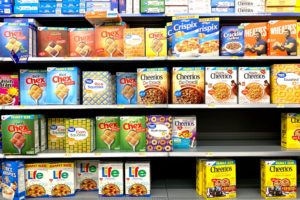In our most recent article, we shared valuable information on low FODMAP foods and high FODMAP foods. It is important to share information on foods that may be irritating to the digestive system. For this reason, we are continuing this series by sharing what you can do in addition to avoiding high FODMAP foods.
How to avoid IBS flare ups:
Last time you dropped by, you learned that many popular ingredients can cause havoc on patients’ with IBS digestive tracts. Now, we last shared that beans should be avoided. No only are beans high FODMAP, pistachios, cashews, and almonds are as well.
 Many Americans are trying to be healthier at home during the COVID-19 pandemic while many gyms are still closed. Some people just want to avoid them because they are high-risk or rather not put themselves in jeopardy. That being said, many smaller daily decisions about what you put into your body can have more effect than working out three times a week.
Many Americans are trying to be healthier at home during the COVID-19 pandemic while many gyms are still closed. Some people just want to avoid them because they are high-risk or rather not put themselves in jeopardy. That being said, many smaller daily decisions about what you put into your body can have more effect than working out three times a week.
Most Americans think almonds, cashews, and pistachios are great choices to snack on. However, IBS can seem tricky to navigate. Unknowingly, people with IBS may be eating usually considered “healthy” snacks that are continuously flaring up IBS.
Speak with a nutritionist and local Orlando gastro doctors to minimize IBS symptoms and other digestive health issues. Alternatively, for those trying to choose healthier options, you may be off to a good start avoiding other high FODMAP foods such as gluten-based breads, rye, muffins, pastries, and pastas. These foods will very likely flare up IBS symptoms.
Do not eliminate foods on your own:
 So this may seem counterintuitive, but high FODMAP foods may contain prebiotics. Those provide healthy bacteria to the gut. High FODMAP foods should never be taken out of a diet altogether unless directed to do so by a gastroenterologist for reasons previously mentioned. Instead, there are calculated ways which foods can be weeded out.
So this may seem counterintuitive, but high FODMAP foods may contain prebiotics. Those provide healthy bacteria to the gut. High FODMAP foods should never be taken out of a diet altogether unless directed to do so by a gastroenterologist for reasons previously mentioned. Instead, there are calculated ways which foods can be weeded out.
For starters, try removing coffee from your diet if IBS is becoming a daily bother. Spicy foods can also take a knee. After this, symptoms may be very minimal or nonexistent.
From there, you may discuss with your stomach doctor what the following steps should look like. When eliminating high FODMAP foods, the process should be carefully panned out.
How the low FODMAP diet works:
In most cases, the low FODMAP diet is very restrictive and should only be temporary. The first phase of the diet is elimination as most diets begin. The elimination phase lasts for around three to eight weeks.
The timing depends on the person’s response to the diet. Mindfully, in the elimination phase, all high FODMAP foods will be taken out of the person’s diet. The next phase is reintroduction.
Once the symptoms have returned to base line or are almost gone, FODMAP foods can begin to be reintroduced. About every three to seven days, one high FODMAP food can be reintroduced into the person’s diet.
By reintroducing one food at a time, it makes it very clear which food causes any symptoms. The next phase is maintenance. The goal of this phase is to maintain a no-symptom life. In this stage, there will most likely be some foods that stay on the “avoid me” list.
Eventually, some patients may be able to introduce all foods back into their diets, but this is pretty rare. Join us next time as we share more information on digestive health and ways to feel your best. Make an appointment today to avoid and unnecessary pain.
Staff Writer
